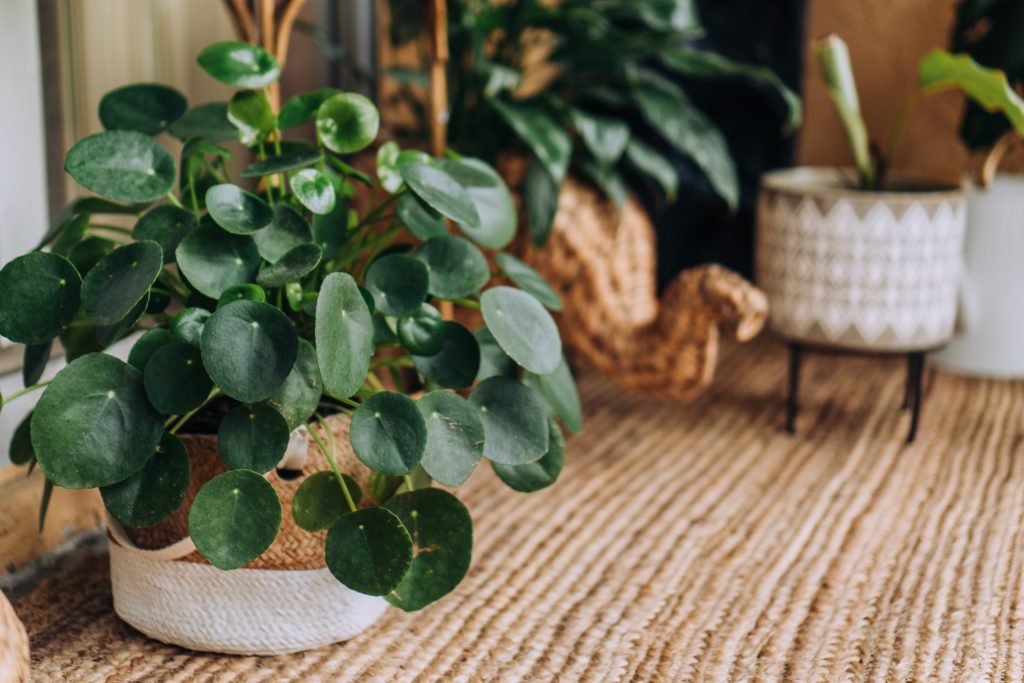One house plant that offers you varieties with different foliage colors, design, and shape is the Pilea Plant. With over 600 species, the Pilea plant has become a popular option for house plant growers and gardeners. Asides from its attractive foliage features, it is widely sought for its low maintenance.
Although the Pilea Plant can survive uncomfortable conditions better and longer than other house plants, your Pilea Plant is still at risk of certain problems if precautions are not taken when tending to them.
Some of these concerns include drooping leaves, yellow and brown edges, and root rot.
These issues are usually associated with the watering conditions, soil conditions, potting medium, and lighting conditions. If the basic requirements are adequately supplied, your Pilea plant is sure to thrive beautifully.
It was mentioned earlier that the Pilea plant has over 600 species, while this is fascinating, it could also be a dilemma for house plant growers who are on the lookout for varieties of Pilea plant to propagate, so we have provided a list of the most beautiful and common Pilea plants you can grow in your home.
In addition to this, we’ve provided tips on nurturing them.
Pilea Plant Basic Information And Care
While some of their varieties are rare to find, most of them are inexpensive and easy to purchase. Here’s what the Pilea Plant profile looks like and some of it’s basic needs.
| Botanical name | Pilea spp. |
| Light | Bright indirect light |
| Watering | Moderate watering |
| Temperature | 65°F-75°F |
| Toxicity | Non-toxic to pets and humans |
| Food | Liquid house plant fertilizer |
| Humidity | Low humidity |
| Mature size in height | 12 inches |
| Average life span | 7-10 years. |
Here are a few tips on how to care for your Pilea Plant:
- Ensure the soil never dries out before watering.
- Place the container where the plant can receive bright indirect light.
- Check the soil texture to determine dryness and adequate amount of water needed.
- Always check for a change in foliage color or appearance to determine if you are not doing something right or if the plant lacks a basic need.
- Combat pest infestations early enough to prevent plant damage.
- Mist the leaves regularly.
- Use appropriate fertilizers for the plant and read the precautions to using them before application.
Pilea Plant Varieties You Can Grow Today
This is a list of the most beautiful and common Pilea plants you can grow in your home or garden:
1. Pilea Globosa
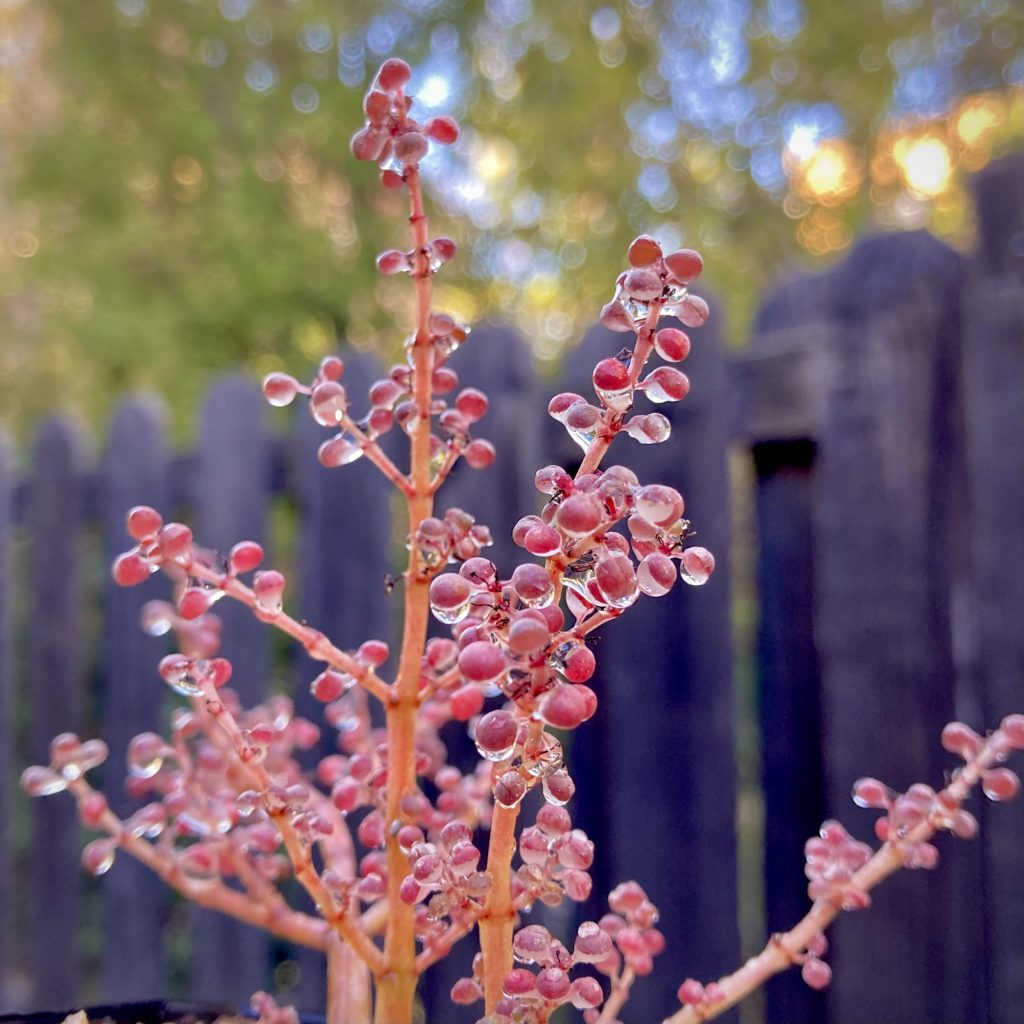
The Pilea Globosa is one of the rarest Pilea varieties that bloom and produces attractive flowers. The Pilea Globosa is the common name for the Pilea Serpyllacea. This variety comes in different colors ranging from green, red, burgundy, and even gray. In comparison with other varieties, it is unusual in color and shape.
In addition, it is rare to find and expensive to purchase.
The Pilea Globosa can easily grow into leggy plants if not properly tended to. Ensure that the plant is placed in an appropriate container that matches its size so it would not look awkward.
The plant should never completely dry out before watering. You must note that since this plant does not have wide leaves and strong stems, they should be kept away from drafts and fans that could damage them. You must be conscious of your watering to prevent the soil from being waterlogged.
Although the Pilea Globosa is not toxic to pets, still keep them away to prevent your plant from being damaged.
2. Pilea Mollis
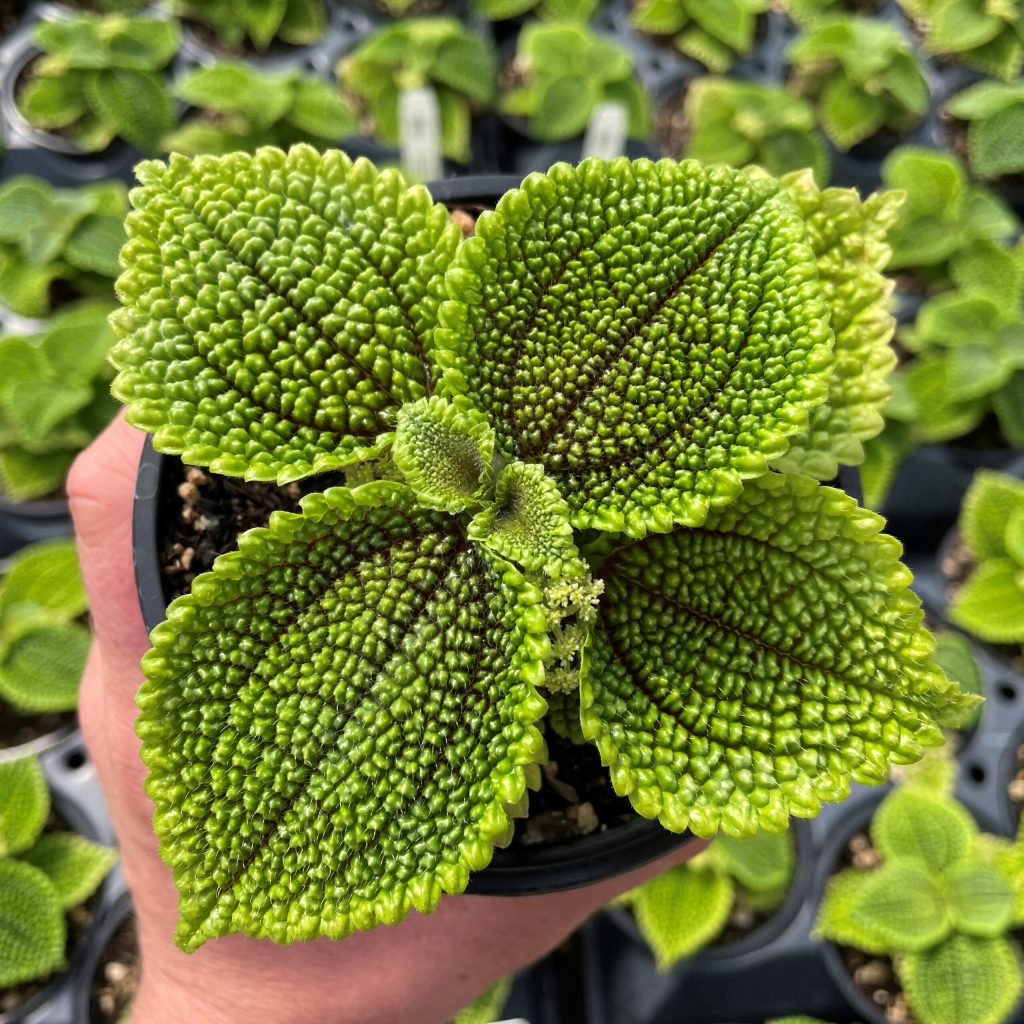
Amongst other varieties of the Pilea family, the Pilea Mollis is quite popular for its thick and rough foliage texture. Their dominant colors are different hues of green and sometimes, purple. Exposure to direct sunlight would cause a change in foliage color, their leaves may drop and sometimes may produce leggy stems.
Although they are not toxic to pets, keep your pets and kids away from your Pilea Mollis. When the plant is deprived of adequate lighting, it can become leggy. The beauty of the Pilea Mollis is when the plant becomes bushy but they never get tall. If you notice the foliage color of the Pilea
Mollis starts getting brown, it may be a pointer the plant is kept in a cold environment or is deprived of adequate light.
Wilting leaves are a sign the plant is under-watered. The basic requirements of the Pilea Mollis are adequate watering, proper soil mix, appropriate containers, and pruning to boost the growth of the Pilea Mollis.
3. Pilea Ellen
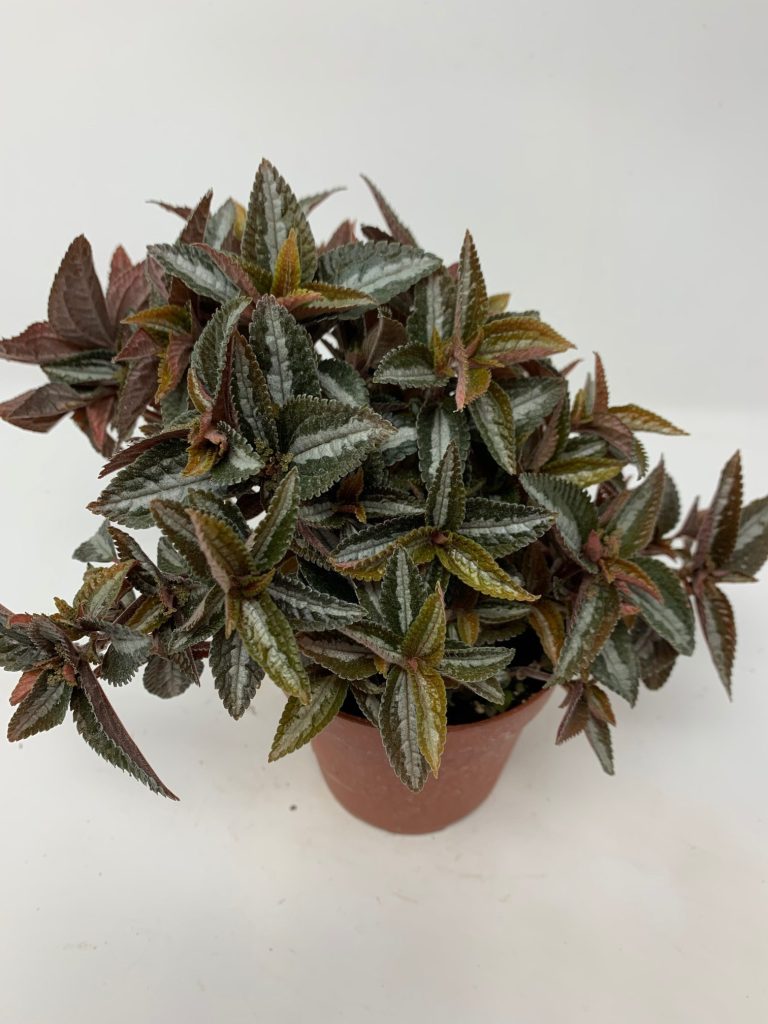
This is a unique Pilea plant. The Pilea Ellen is popular for its silvery-colored leaves and wavy edges. Although there are other varieties of the Pilea Ellen that have both green and silver as their foliage colors the most dominant color of this variety is Silver. They are non-toxic plants but still keep them away from the reach of your kids and pets.
The Pilea Ellen can be grown indoors and outdoors. The ideal soil mix is organic soil; the organic content can be increased by adding compost or mulch. This variety does not produce flowers it still is a show-stopping plant, especially when placed in colorful containers.
You can hang them in dangle baskets rather than the regular way of placing them on the floor or by window panes. Ensure they are placed in locations where they can easily blend and fit into your home. If leaves are wilting, change the location to a place where it can receive bright light.
4. Pilea Watermelon
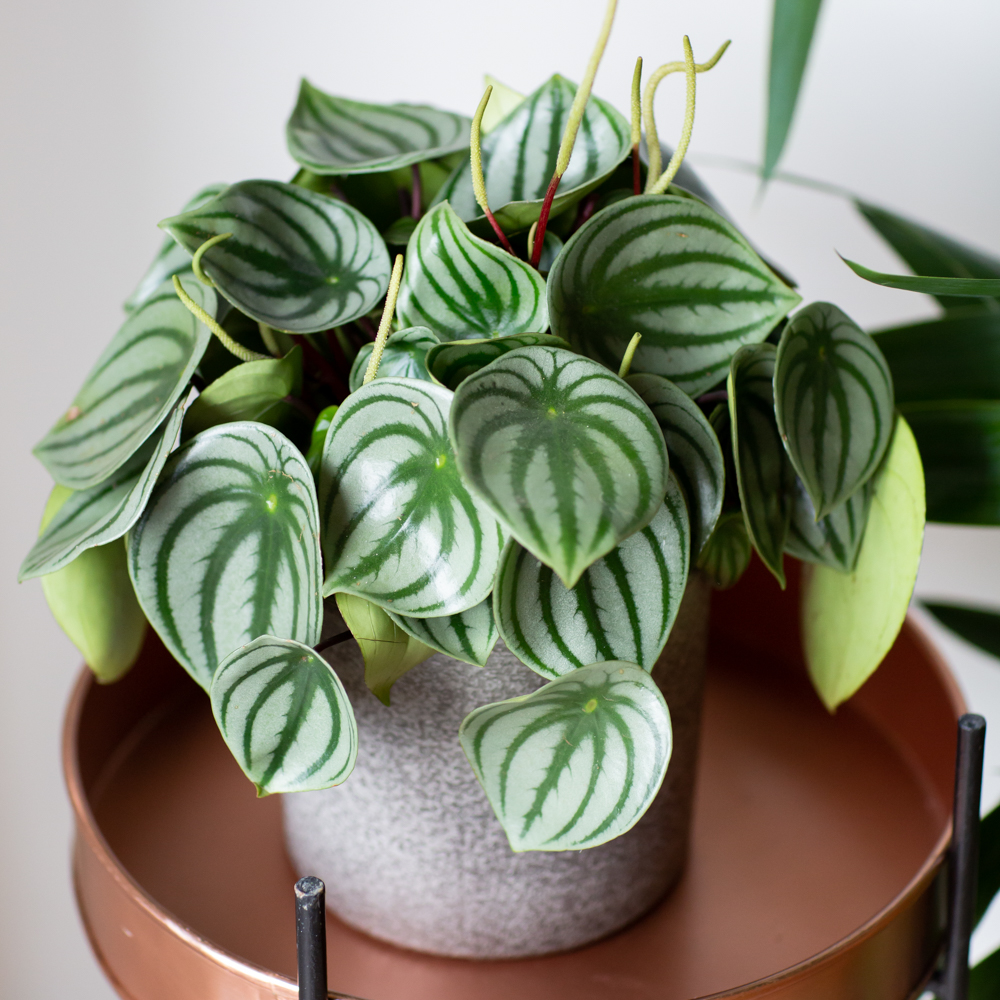
It is one of the Pilea varieties with an attractive foliage design. The Pilea Watermelon is also referred to as Pilea Aluminum because of its silvery design on the leaves. The dominant colors of the Pilea Watermelon are green and silver.
It is popularly referred to as an artistic plant because of its unique markings. They can grow up to 12 inches in height when properly nurtured.
The Pilea Watermelon grows wide and rapidly when grown under the right growth conditions such as bright indirect light, adequate watering, partial, moist organic soil, and an appropriate container.
When exposed to direct sunlight for a long time, the green parts of the plant would start turning brown. Ensure the soil never dries out before watering as this can lead to drooping leaves. The plant thrives in warm and humid environments with a temperature between 70-75 °F during the day and 60-70 °F at night.
5. Pilea Involucrata
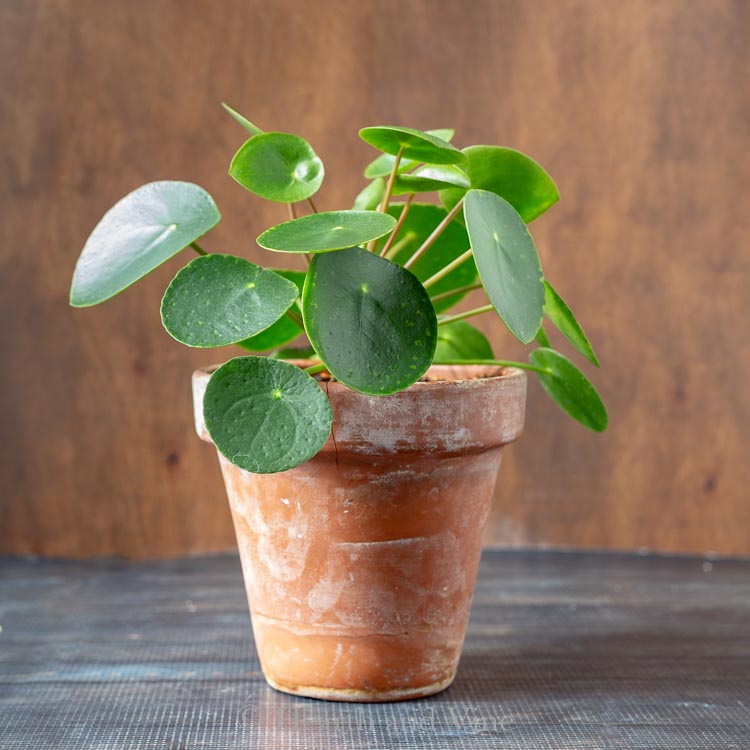
This Pilea variety is also mostly sold under with name tag “friendship plant”. The Pilea Friendship has a sleek foliage surface and its dominant colors are wine and green. Sometimes, you can find streaks of white on their leaves.
When properly tended to, the plant grows very wide leaves; this implies the plant should not be grown in small containers.
This variety also belongs to the class of most attractive foliage designs in the Pilea family. The plant thrives in organic soil. Overwatering the plant can cause root rot which can destroy the plant. Place the Pilea Involucrata in areas where they can receive bright indirect sunlight.
If grown indoors, place them around the window panes so they can receive adequate lighting. If this does not suffice, make use of artificial light from fluorescents. To get the best out of this plant, choose attractive but plain colored containers to pot them.
6. Creeping Pilea
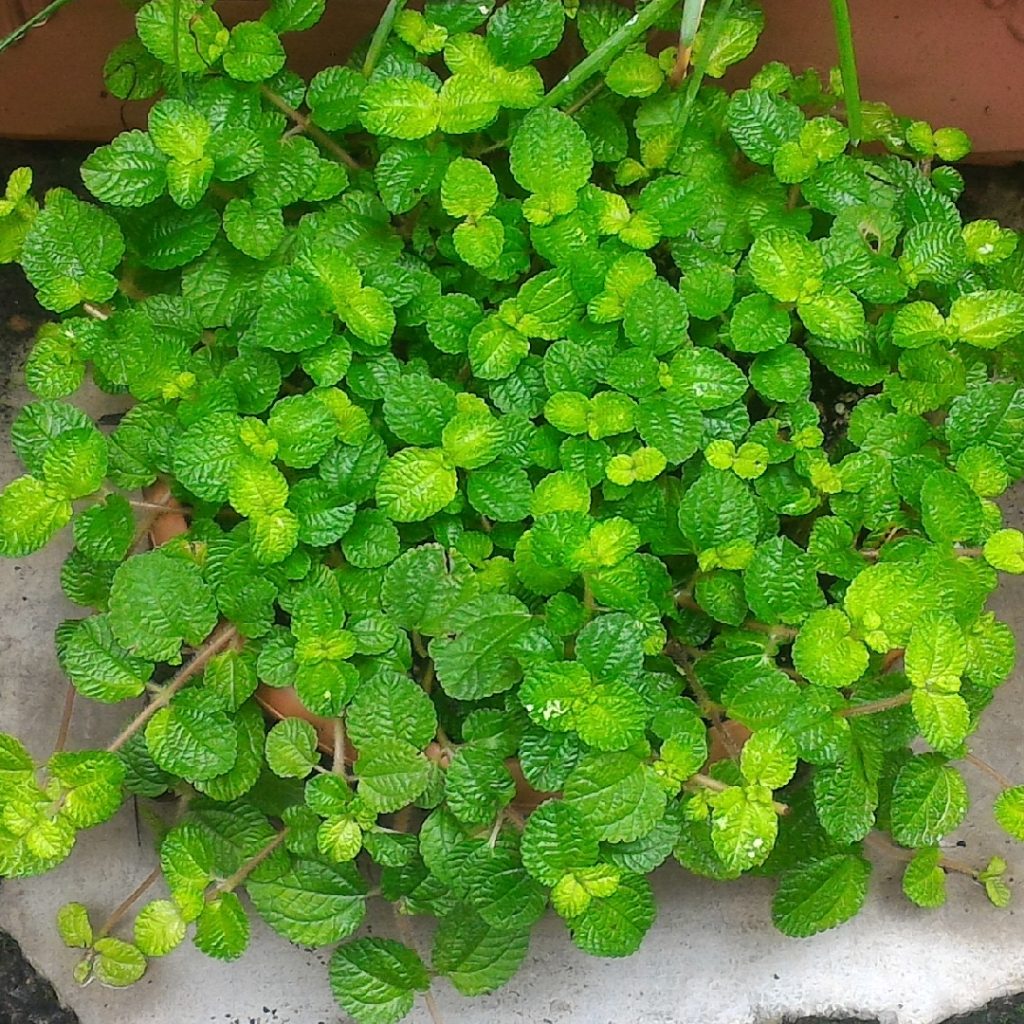
As the name suggests, the Creeping Pilea is unlike the other varieties of the Pilea family. The climbing plant can be grown in containers and dangle baskets because of its crawling abilities. It is often grown as an indoor plant and a wall cover. It is a perfect choice for a hanging plant. The plant is most admired for its oval, lush and shiny leaves.
The ideal temperature for the Creeping Pilea is between 65-80 °F. To maintain its outlook and leaf vigor, keep the creeping Pilea away from heat vents or drafty windows. Reduce watering if you notice the leaves are turning yellow.
The Creeping Pilea should be watered adequately but overwatering it can lead to soggy soil which is harmful to the plant. The most appropriate fertilizer to use is a balanced liquid fertilizer but do not fertilize frequently as it can damage the roots. The best time to fertilize them is during summer and spring as their most active seasons.
7. Pilea Peperomiodes
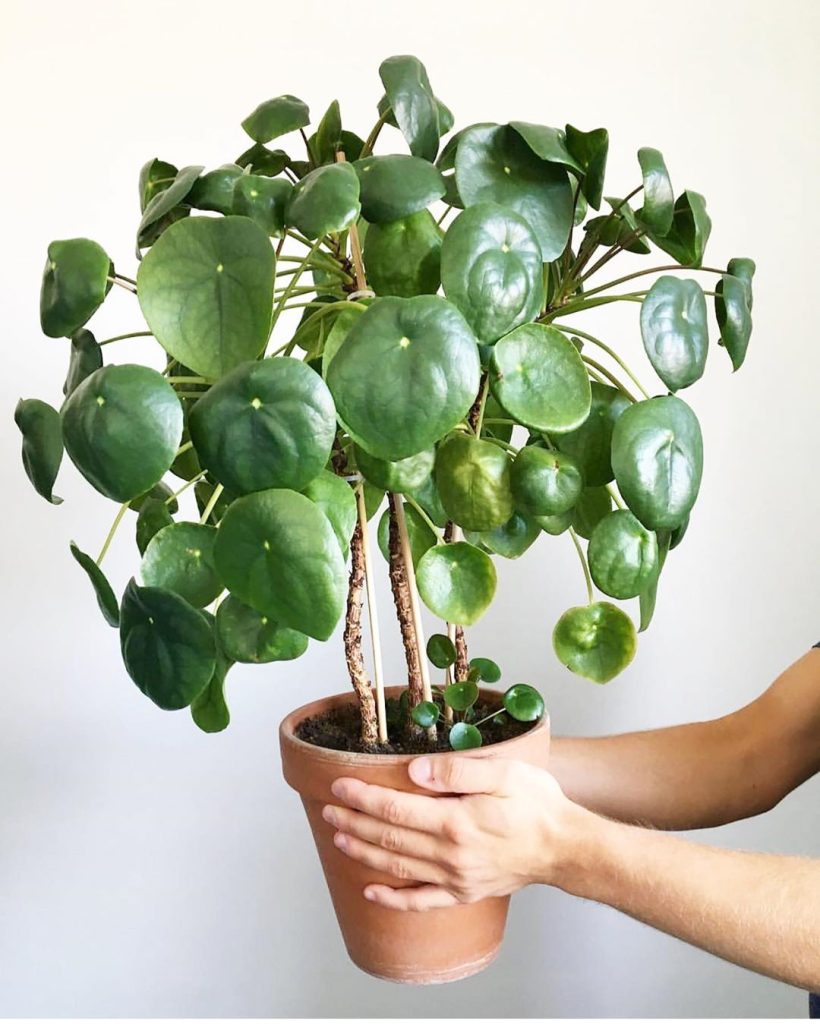
The house plant community refers to the Pilea Peperomiodes as the Chinese Money Plant, Ufo Plant, Pancake, or missionary plant but most common of it is the Chinese Money Plant. The circular leaves of the Chinese money plant make it distinct from other Pilea varieties. The thin long stems are also an attractive feature of this house plant. With proper care, they can grow as long as 12 inches at maturity.
An interesting fact about this plant is that it can live up to 10 years if its survival requirements are adequately provided. Since this plant is common in China and Scandinavia, most buyers order their plants from stores located of this origin.
The basic requirements of the Pilea Peperomiodes are proper watering, well-drilled container, appropriate soil mix which is organic soil (this can be purchased from nurseries or online stores), regular misting, and proper lighting conditions.
If you notice any slight change in foliage color or appearance which may be the leaves turning yellow, brown, or wilting, check for under watering, under watering, and the lighting conditions the plant is being exposed to which should always be bright indirect light.
8. Pilea Silver Cloud
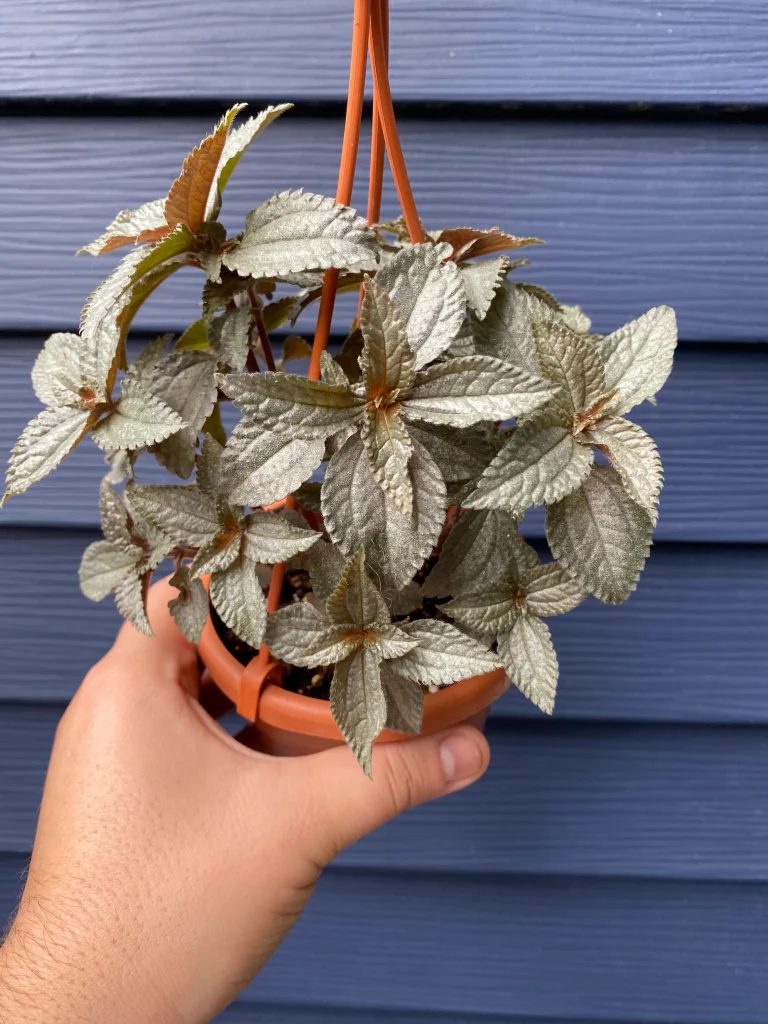
If you are looking for a unique and attractive houseplant, the Pilea Silver Cloud is your perfect option. To some house plant growers, the Pilea Silver Cloud outmatches other Pilea varieties with its silver color and shape. Some varieties of the Pilea Silver Cloud have streaks of burgundy and green while some are silver in foliage color.
For some varieties, the upper foliage color is not the only attractive part as the back of some varieties has a contrasting red at the back. This house plant can be placed in containers or dangle baskets. If you choose to grow them outdoors, you can grow them in nursery beds and transplant them later to a container if you desire.
Although they thrive in temperatures between 65◦F to 85◦F, they can tolerate lower levels for a little longer than other varieties. Asides from providing adequate watering, medium lighting, and a well-drilled pot that allows for drainage of water, regularly mist the leaves to improve humidity and to prevent dust build-up.
9. Pilea Coral
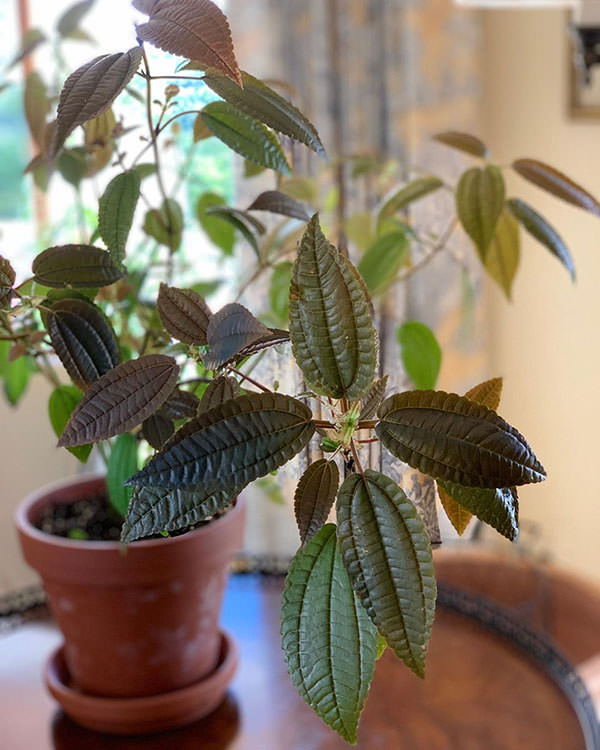
The Pilea Coral is similar in shape to the Pilea Silver Cloud only that the Pilea Coral produces flowers during bloom time. It is also referred to as the Copper Pilea. With proper care. They can grow up to 18 inches in height and can spread up to 12 inches in width. The Pilea coral can be made more appealing when placed in attractive containers.
Some of the common problems of the Pilea Coral are root rot, drooping/wilting leaves, gray leaves. These issues are associated with under-watering, overwatering, improper lighting conditions, and sometimes pest infestations.
The first step to combating any of these concerns is to identify the cause of the issue which mostly manifests in a change of foliage color and appearance.
After identifying the problems, check if much damage has not been done to determine if you would discard the plant or if you would give it another chance at surviving.
10. Pilea Baby Tears
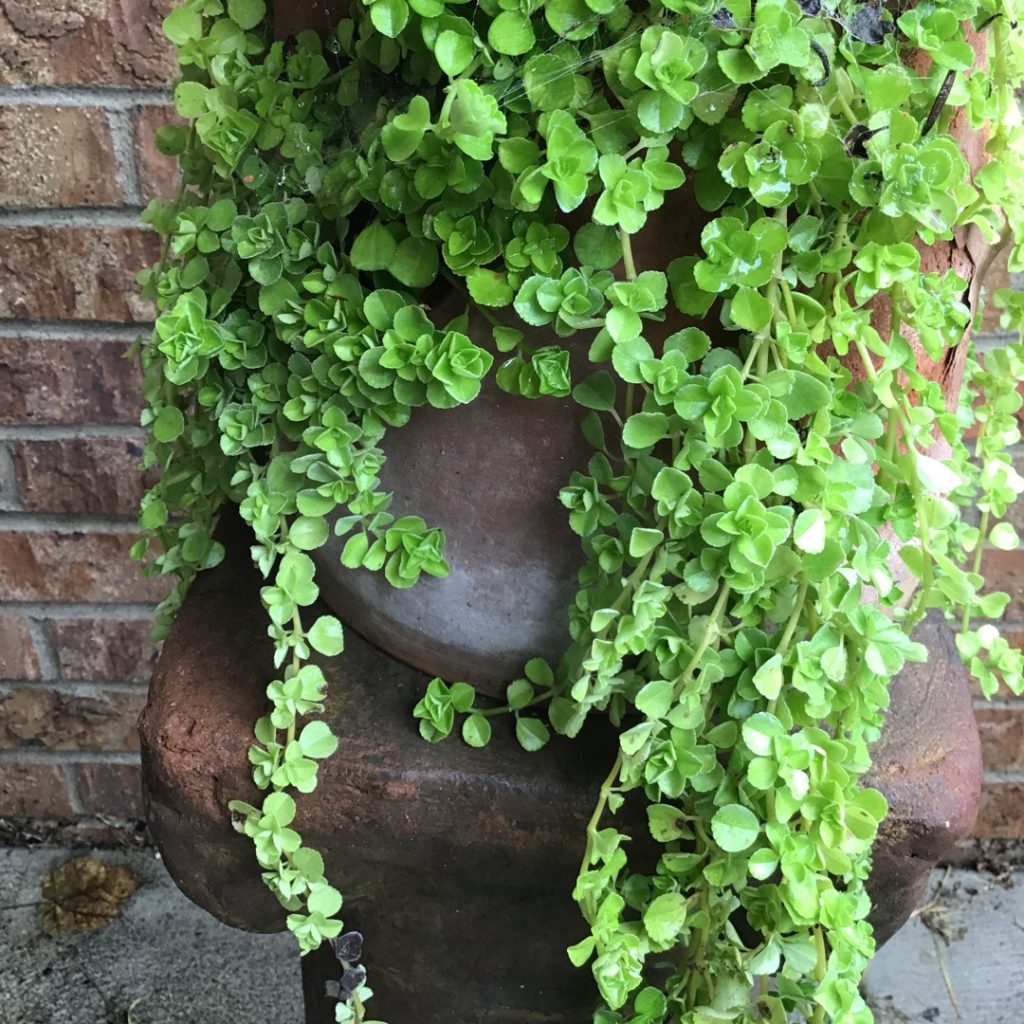
The Pilea Baby Tears is also referred to as Pilea Depressa. Unlike other Pilea varieties, the Pilea Depressa has a slow growth rate. Amongst the most attractive creeping varieties of the Pilea family, the Pilea Baby Tears Plant tops the list. One growth requirement that should not be taken lightly with this plant is the watering condition.
This plant tends to be bushy when matured hence the need for adequate watering sufficient for the soil’s needs. It is important to gauge the watering level; to prevent soggy soil that can be imminent if the grower is not careful.
Since they are crawling plants, you must be creative with how you place and position them. You can place them in dangle baskets, hanging shelves, bottle hangers, or regular pots and containers. They are most attractive when grown in hanging/dangle baskets.
Adopting any of the placement techniques would not only enhance the beauty of your home but would also give your home a unique and organized appearance.
11. Pilea Dark mystery
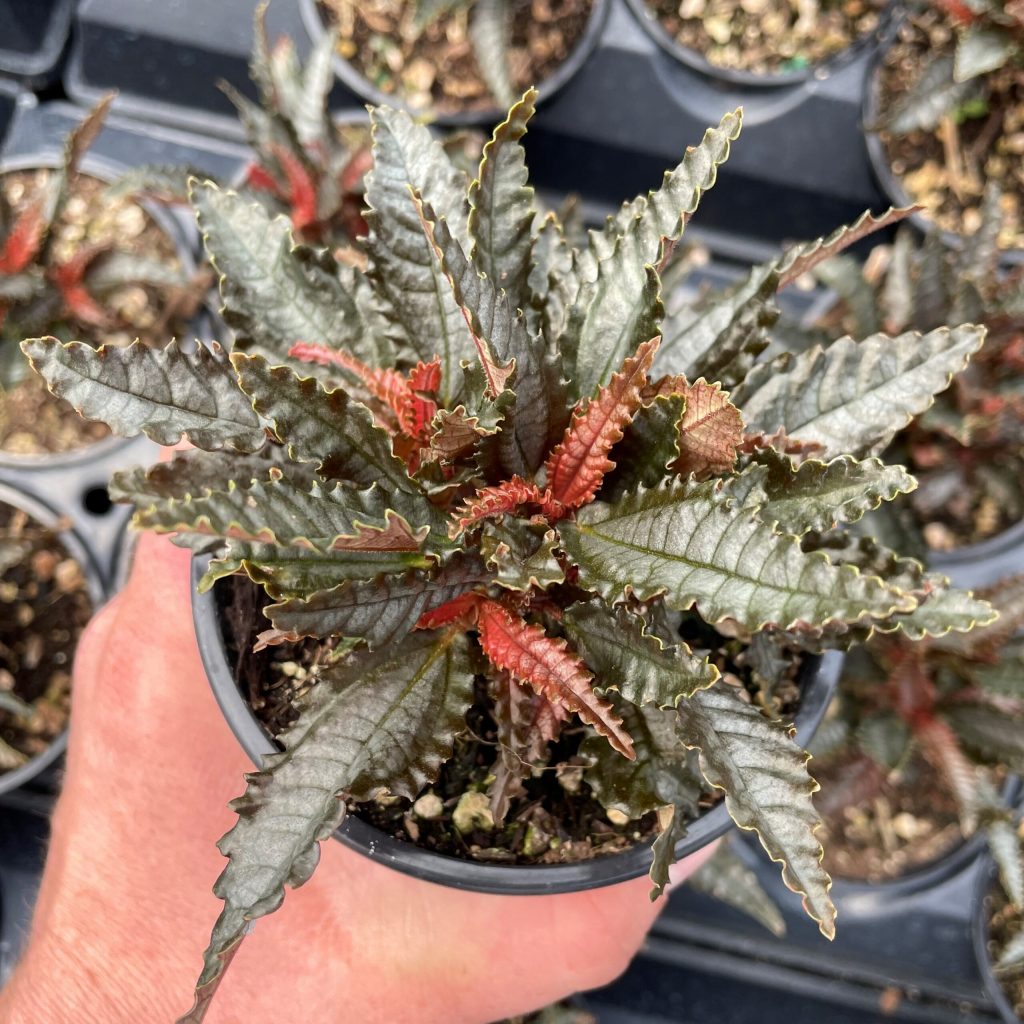
As the name implies, the Pilea Dark Mystery is an unusual plant with dark green and brown leaves. Some varieties have streaks of silver, bronze, and burgundy.
Providing proper lighting conditions, appropriate humidity level, well-drilled container, and organic soil would ensure your Pilea dark Mystery thrives.
The Pilea Dark Mystery can grow up to 8 inches in height and 6 inches in width. Since this plant is popular for its wide leaves which is an attractive feature, a slight change in the foliage shape would disfigure the plant. Proper care has to be given to this plant to ensure it grows without any mishaps.
Final Note
We are sure this list offers you information on different Pilea varieties you may wish to propagate. While some of these varieties are expensive, others can be easily purchased from nearby nurseries or plant stores.
For those that are unavailable in local stores, you can order from online stores. Most of these plants are low maintenance so, with adequate provision of their basic requirements, they are sure to thrive.
More on houseplants from thehometome:
- Philodendron Brandi: How to Care For Them
- 10 Beautiful Pink Houseplants For Your Home
- Weigela Varieties: 10 Common & Rare Types Of Weigela
- 10 Black And White Colored Flowers For Your Home
- Begonia Varieties: 10 Common & Rare Types Of Begonia
- Epiphyllum Cactus: How to Grow And Care For This Cacti
- Alocasia Varieties: 10 Common And Rare Types Of Alocasia
